Silver Spangle
Edged Dilute Mutation
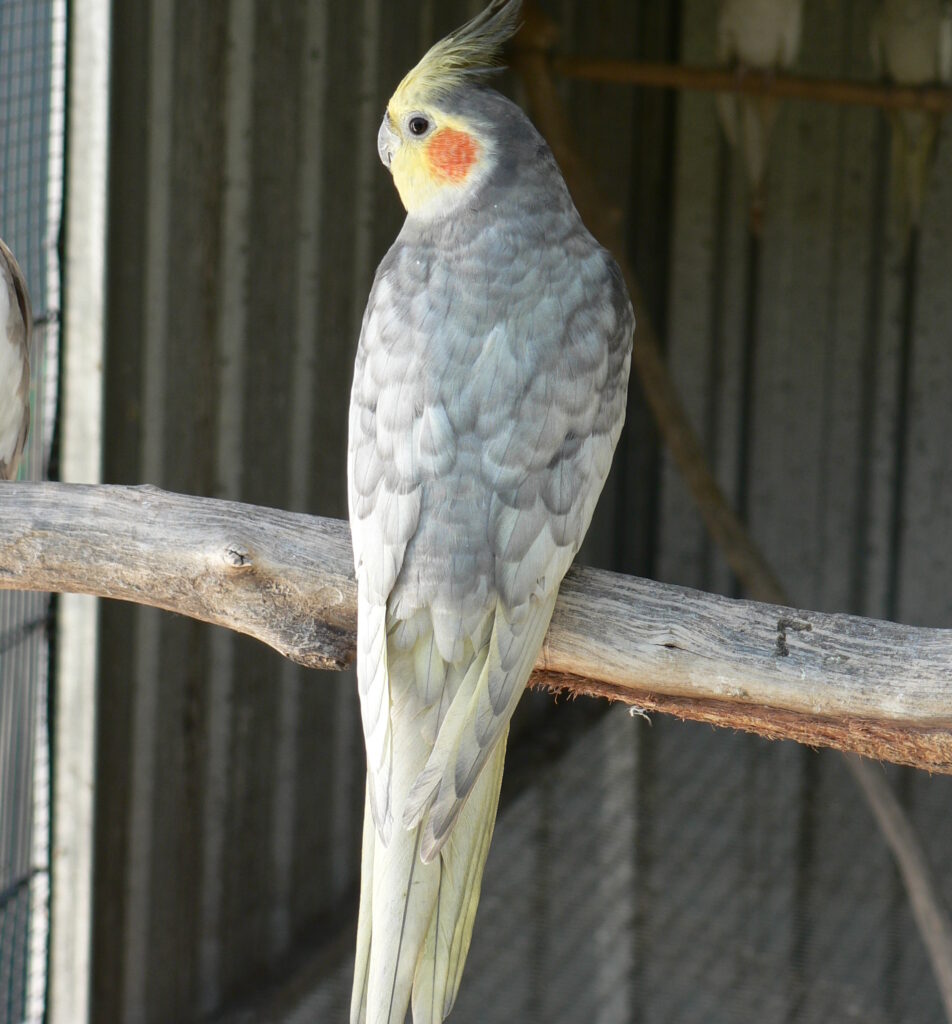
Edged Dilute is the correct name of the genetic change that has occurred to produce this colour cockatiel. Spangle is the term that refers to the colour that is produced by the Edged Dilute change. The term Silver has been added to the colour name because of the lighter grey colouration produced. It does not mean that these birds will produce any normal pastelsilver or west coast silver offspring if mated with a hen of those colours. It is possible to produce a multi-mutation bird that is a pastelsilver spangle for example, but at this stage I am only dealing with the single mutation.
The Edged Dilute mutation acts on the bird by reducing the amount of melanin pigment produced. This reduction does not occur on an even overall scale in the feathers and because of the unevenness the effect is that of spangles or striations on the feathers. The longer flight feathers are the most obvious in showing the melanin that has been retained by the darker ends still visible. In this picture of the back feathers on a 6 week old baby spangle cockatiel you can see the obvious unevenness of the melanin reduction, shown here as darker spangles or striations on each individual feather. The Spangle pattern usually is darker on the shoulders and the head area.
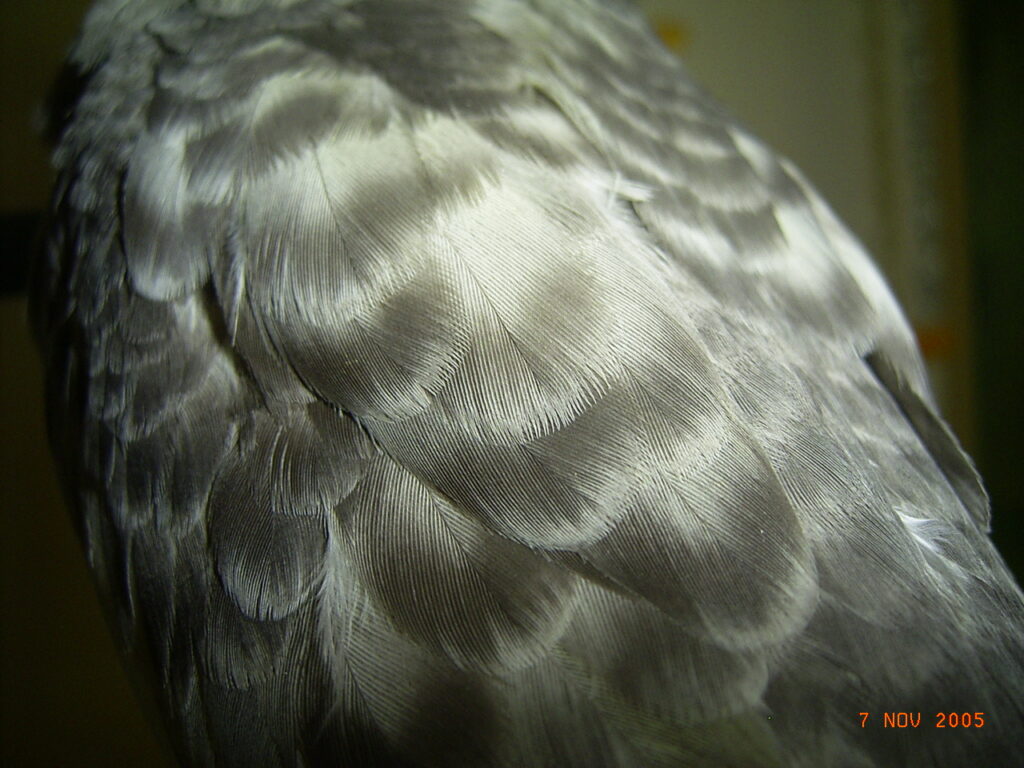
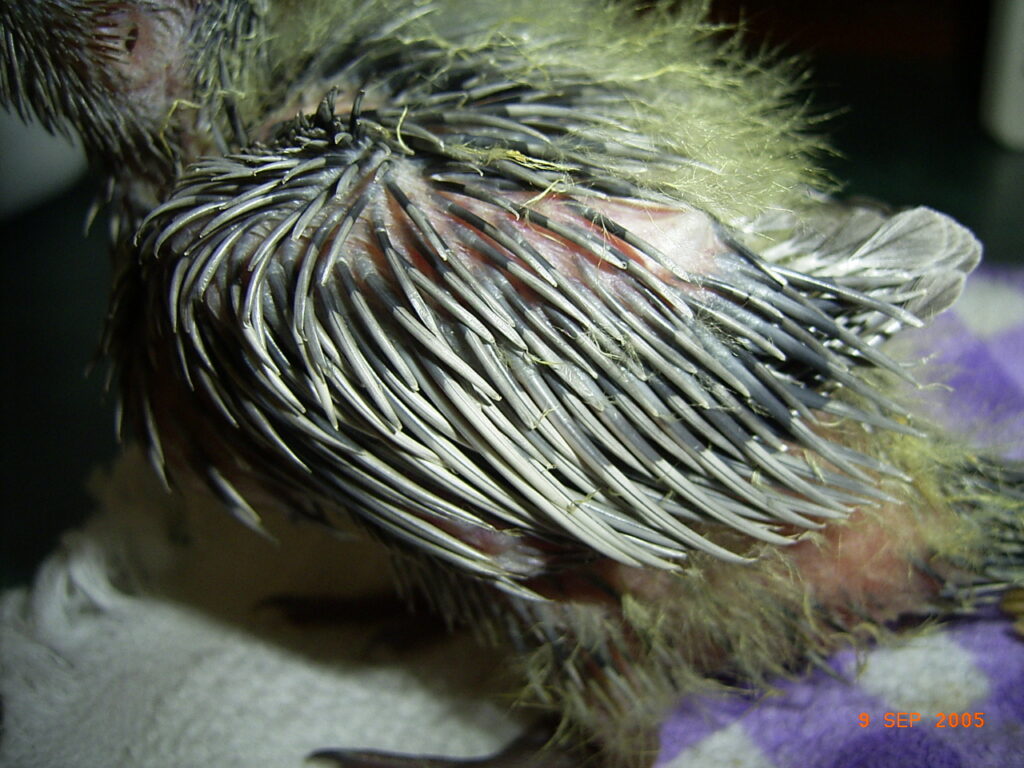
On hatching the chicks appear to have a dark brown eye rather than black but these appear to change to the normal dark coloured eye as seen in normal grey cockatiels once the bird matures. The legs, feet and beak are all dark coloured.
There seems to be some difference to the usual feather patterning on very young chicks at pin feather stage compared to normal greys. I have noticed on Spangle cockatiel chicks there seems to be a less noticeable white wingbar visible on the pins (picture left) and upon opening of the feathers the flights have had no spots on the underside as one would normally see in other mutations. I cannot say that this is a characteristic of this mutation as I have only studied my own birds but these traits have been the same on each one.
The Edged dilute mutation that gives us these gorgeous Australian Spangle cockatiels is a result of the actions of an autosomal recessive gene. This means that the gene is inherited in the same manner as pied or whiteface or any other of the usual recessive mutations. To get a visual Spangle cockatiel a bird must carry 2 Edged Dilute genes, one it receives from its mother and the other from its father. A bird carrying only 1 gene will not show any visual signs of the mutation but will be able to produce Spangle chicks if paired with another bird carrying the Edged Dilute gene.
By far the nicest cockatiels I have seen of this mutation have been the Whiteface Spangles (pictured right). The variegated charcoal colouring interspersed with the lighter silver or white feather colour give the bird a dusty or smokey appearance. The white face on the adult males is striking when surrounded by this hazy patterning.
Another multimutation is the Pied Spangle (pictured left). I have not seen many but the one I did have was a nice sized bird. I found the pied effect seemed to take away most of the Spangling except for on the shoulder area. This combination to me is not advisable as there seems to be no point to deleting the spangles by adding the pied gene when in effect the aim in breeding spangles is to promote their gorgeous pattern.
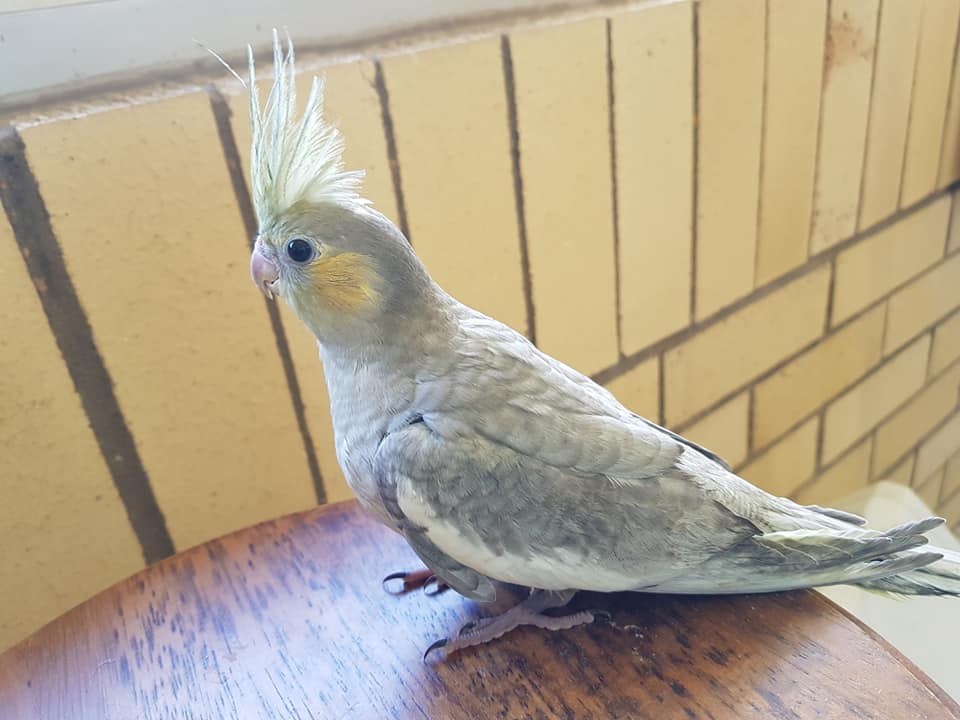
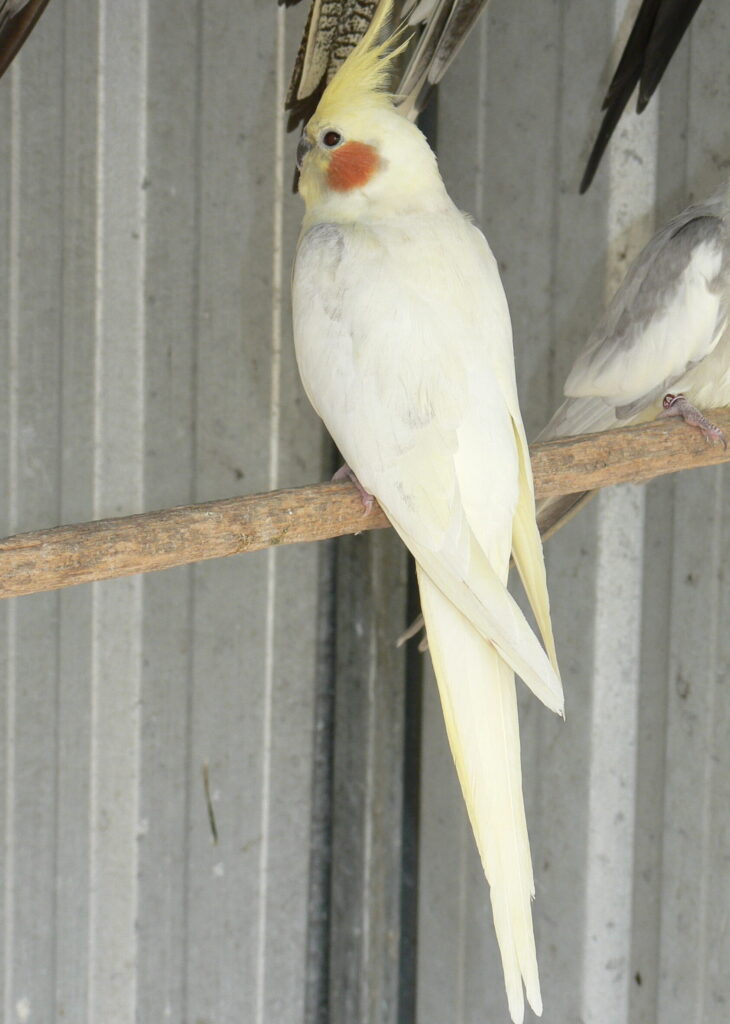
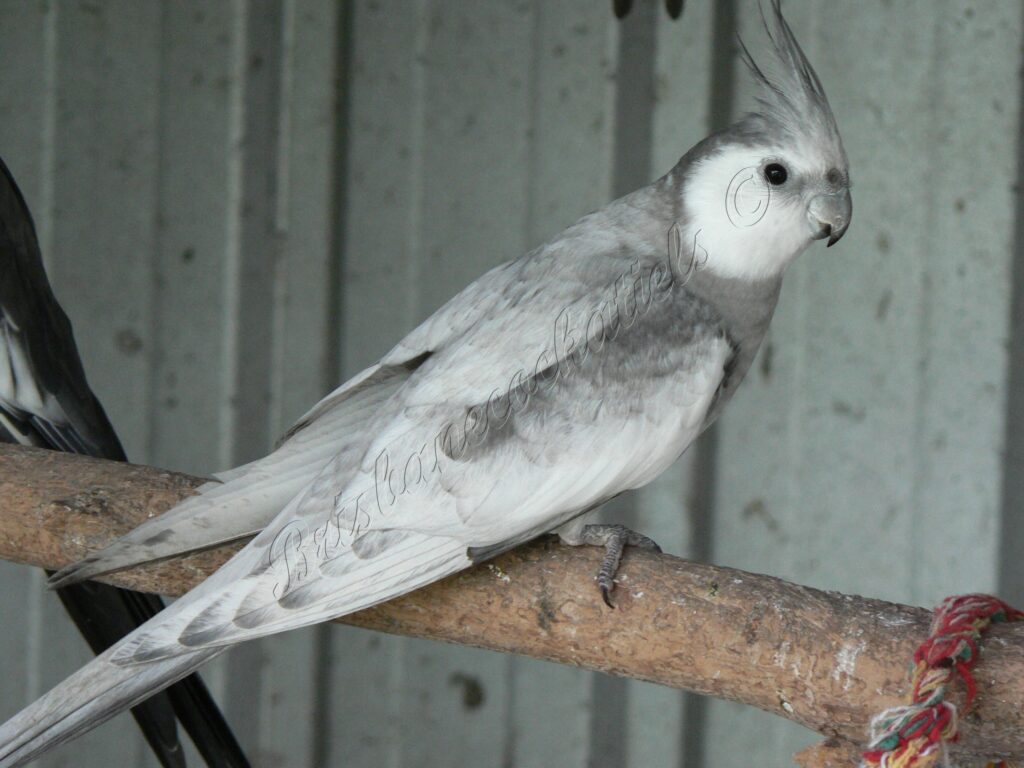
Reach Out To Us
Interested in adding a new feathered family member or learning more? Reach out to us by clicking on the button below.